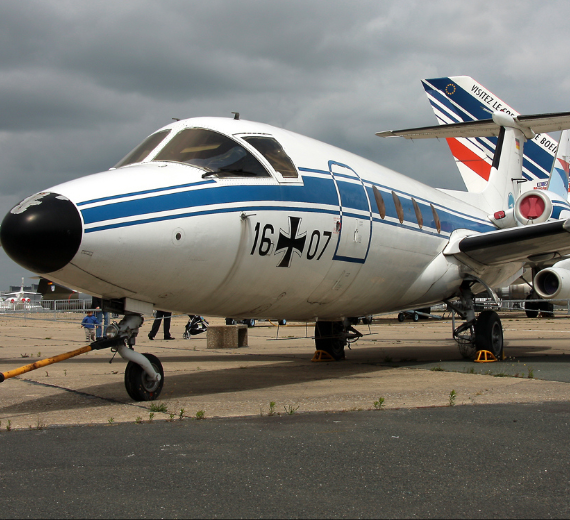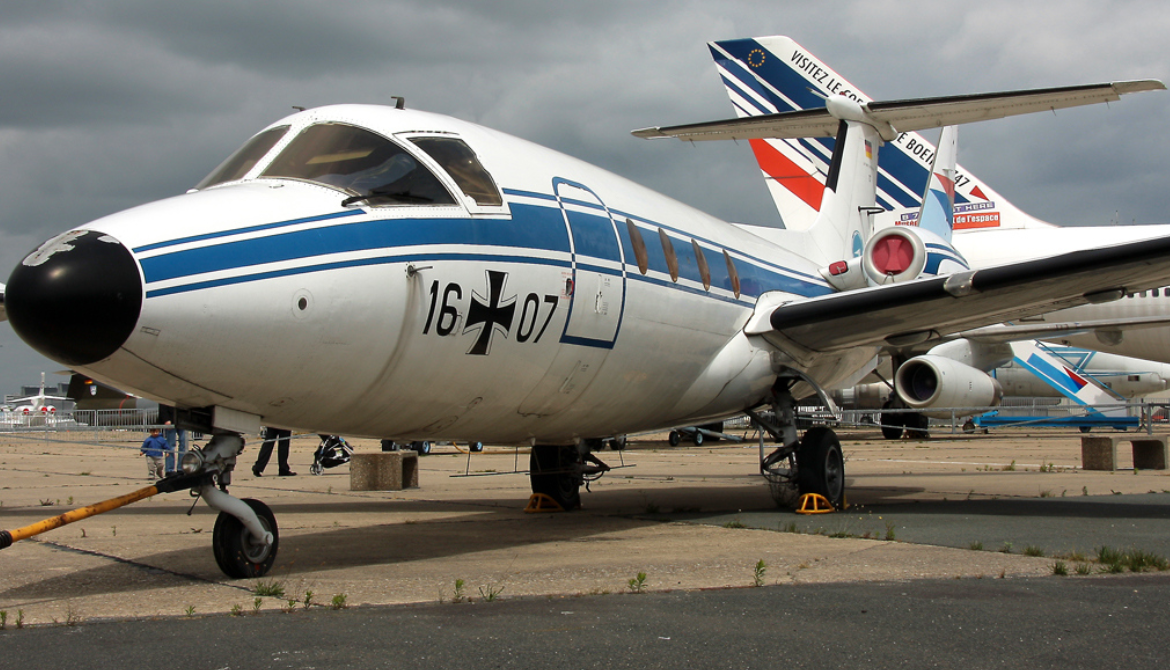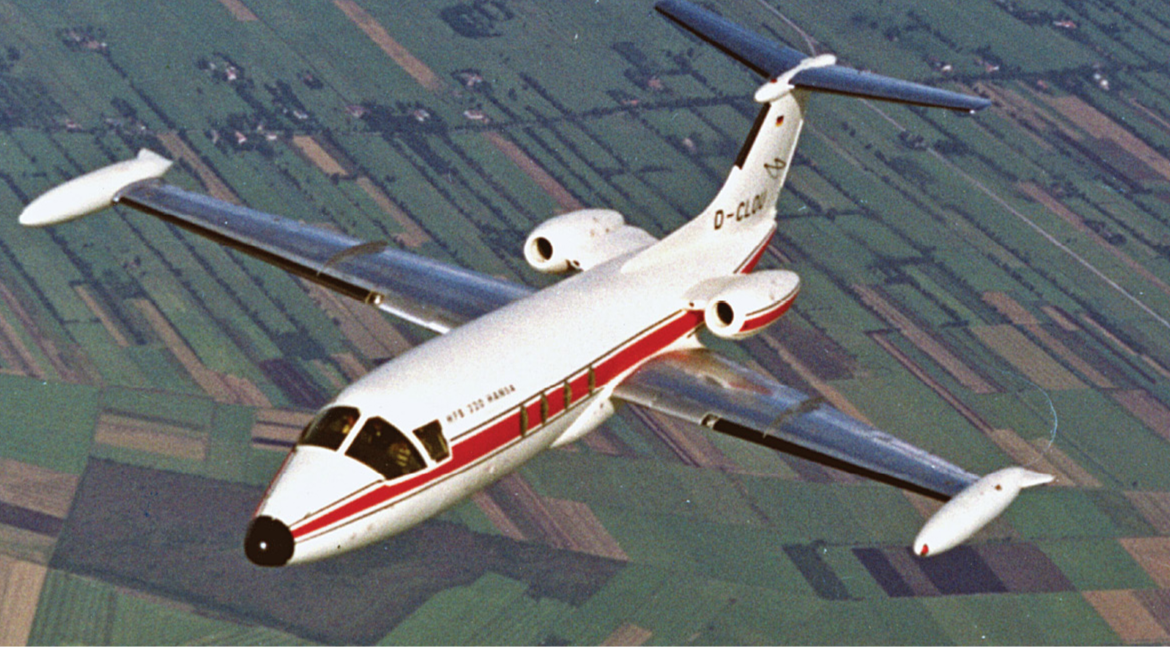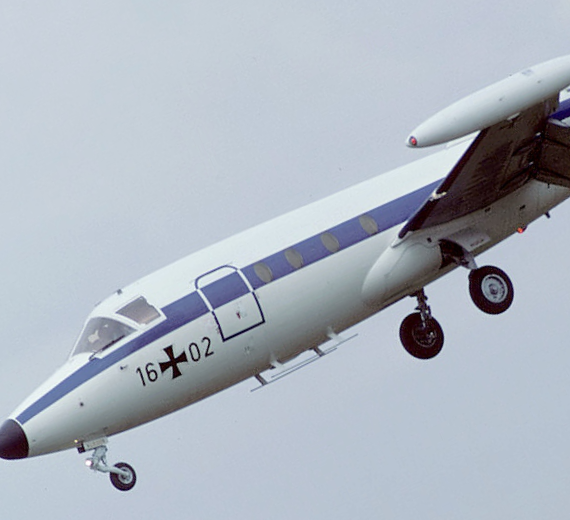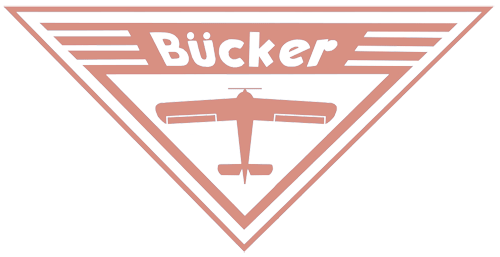HFB 320 Hansa Jet
Role Business jet
National origin Germany
Manufacturer Hamburger Flugzeugbau
First flight 21 April 1964
Retired Military: 24 June 1994
Civilian: 30 November 2004
Status Retired
Primary user West German Air Force
Number built 47
.
History Hamburger Flugzeugbau
HFB 320 Hansa Jet
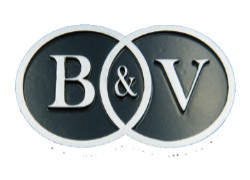
The HFB HFB 320 Hansa Jet is a twin-engine, ten-seat business jet that was designed and produced by German aircraft manufacturer Hamburger Flugzeugbau between 1964 and 1973. The most recognisable and unconventional feature of the aircraft is its forward-swept wing.
The Hansa Jet begun development during the 1960s, the selection of the forward-swept wing can be largely attributed to head engineer Hans Wocke, who had previously worked on the experimental Junkers Ju 287. It possessed a spacious cabin, which was achieved due to its wing design, but was a relatively heavy aircraft, posing some issues during both take-off and landing. On 21 April 1964, the prototype conducted its maiden flight. On 12 May 1965, the first prototype was lost during a test flight, killing Hamburger Flugzeugbau's chief test pilot; several design changes were made to change the Hansa Jet's stall characteristics..
Design
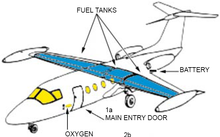
The HFB 320 Hansa Jet is a mid-wing monoplane of a somewhat conventional layout, being powered by a rear-mounted twin jet engines beneath a T-tail. Constructed entirely of metal, it has a 10-seat passenger cabin and retractable undercarriage. As certified, the Hansa Jet can carry up to 12 passengers. Its General Electric CJ610 turbojet engines enabled the aircraft to achieve a maximum speed of 900 km/h (486 kn) along with a maximum endurance in excess of 2,200 km (1,200 nmi). The decision to mount these engines far aft contributed to the relatively quiet cabin.
0
KmCeiling
0
KmCombat RANGE
0
Km/hAircraft Speed
0
Max Crew
Photo Gallery
Hamburger Flugzeugbau
HFB 320 Hansa Jet


Hamburger Flugzeugbau
HFB 320 Hansa Jet
General Info
-
-
- Crew: 2
- Capacity: 7, 11 or 15 passenger configurations / 1,814 kg (3,999 lb) payload in freighter versions
- Length: 16.61 m (54 ft 6 in)
- Wingspan: 14.49 m inc. tip-tanks
- Height: 4.94 m (16 ft 2 in)
- Wing area: 30.14 m2 (324.4 sq ft)
-
Powerplant
-
-
- Empty weight: 5,425 kg 1,960 lb)
- Max takeoff weight: 9,218 kg
- Fuel capacity: 4,140 L (1,094 US gal; 911 imp gal) usable fuel
- Powerplant: 2 × General Electric CJ610-9 turbojet aircraft, 14 kN (3,100 lbf) each
-
Performance
- Cruise speed: 825 km/h (513 mph, 445 kn) max, at 7,620 m (25,000 ft) at 7,500 kg (16,535 lb)
- Economical cruise speed: 675 km/h (419 mph; 364 kn) at 10,670 m (35,007 ft) at 7,500 kg
- Stall speed: 198 km/h (123 mph, 107 kn) with take-off flap, 178 km/h (111 mph; 96 kn) in landing configuration
- Never exceed speed: 700 km/h (430 mph, 380 kn) EAS below 5,800 m (19,029 ft), M0.83 above 5,800 m (19,029 ft)
- Range: 2,370 km (1,470 mi, 1,280 nmi) with 6 pax and baggage and 45 minutes fuel reserve
- Service ceiling: 12,000 m (40,000 ft) maximum operating altitude
Armament
-
- None
- None
.
Links to Youtube & Others
The selection of the American General Electric CJ610 turbojet engine to power the design was a straightforward choice; at the time, there was no other compact turbojets that had reached quantity manufacture yet. It provided some benefits, such as a relatively high thrust output, but was both noisy and fuel-hungry.
HFB 320 Hansa Jet
On 21 April 1964, the prototype conducted its maiden flight; during the following month, it was exhibited at the Hanover Air Show.[3] A second prototype was flown on 19 October 1964.
Youtube Link
Additionally, a further eight Hansa jets were purchased by the German Air Force for providing electronic countermeasure (ECM) training to air crews; these aircraft were delivered between August 1976 and April 1982.
